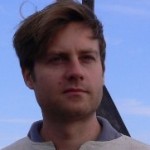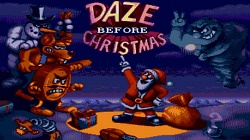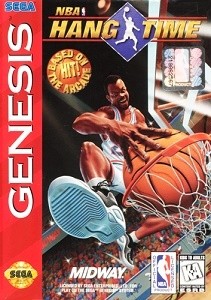 Almost every programmer Sega-16 has spoken to has testified to how easy and intuitive working on the Genesis was. Fond memories of working on Sega’s 16-bit wonder are common, and most people we interview are all to happy to talk about working on it. Yes, it’s safe to say that Sega hit the nail on the head when it made the hardware (thank you Hideki Sato!), and the fact that brand new titles are being released for it more than two decades after it was discontinued is testament to its great design.
Almost every programmer Sega-16 has spoken to has testified to how easy and intuitive working on the Genesis was. Fond memories of working on Sega’s 16-bit wonder are common, and most people we interview are all to happy to talk about working on it. Yes, it’s safe to say that Sega hit the nail on the head when it made the hardware (thank you Hideki Sato!), and the fact that brand new titles are being released for it more than two decades after it was discontinued is testament to its great design.
Recently, Sega-16 got the chance to speak with Carl-Henrik Skarstedt, a former Funcom programmer who worked on several high profile titles for both the Genesis and Sega CD. His experiences with the both machines show what they were capable of in the right hands, and they are proof that many of the problems plaguing game development stem from the publishers, not the developers. Skarstedt worked at Funcom on titles like Daze before Christmas, NBA Hangtime for the Genesis and Samurai Shodown and Fatal Fury Special for the Sega CD. Afterward, he headed to Luxoflux, where he was involved with Kung-Fu Panda, True Crime: Streets of LA and the Transformers series. Currently, Skarstedt works with Broodworks Inc.
Mr. Skarstedt was kind enough to talk to Sega-16 about his time at Funcom and his work on the Genesis and Sega CD.
Sega-16: Was Funcom your first job in the gaming industry? How did you arrive there?
Carl-Henrik Skarstedt: Yes, before I joined Funcom I was active in the demo scene and I got invited to a job interview which went well and I got a job.
Sega-16: What did you like best about the Genesis hardware?
Carl-Henrik Skarstedt: I like that the hardware design is clearly based on arcade machine designs of the time and had very well balanced power. Rather than the individual components I like how they work well together.
Sega-16: Most of your work during this era was on the Genesis. Was the lack of SNES development a decision by Funcom, or was it just the way projects came to you?
Carl-Henrik Skarstedt: We really did a lot of SNES development, but what platforms we worked on was really decided by the publishers we worked for. The first game I worked on was not on the SNES (We’re Back), but Daze before Christmas, Pocahontas and NBA Hang Time all had SNES versions developed in parallel. Pocahontas SNES was canceled due to short sighted production decisions. Samurai Shodown and Fatal Fury Special were both Sega CD, so they didn’t make any sense for SNES.
Sega-16: You worked on Nightmare Circus, a game which was released after the Genesis had been replaced by the Saturn, and then only in South America. Do you know why it was pulled at the last minute? What did you think of the final product?
Carl-Henrik Skarstedt: I mostly worked on the engine for this game, but this game had a very exciting development cycle. This is the summary: some programmers reviewed the design from Sega, and all refused to work on the project so we hired a new guy, Johan Andersson (currently at Paradox) and got a team put together. Eventually the game got delayed, and Sega took the team over to San Francisco for three months, and by the time the game was done there wasn’t much interest in releasing it, but Tec Toy published it (I think they were owned by Sega somehow). The game was an experiment for Sega, to have a pro designer make an extremely detailed game design (over 1000 pages) and then hand that over to a pro developer. I think the result is close to the original vision and quite unique, but I can’t really judge games I’ve worked on since I get so used to them.
 Sega-16: Daze before Christmas was another title that never saw an American release, and many people tend to think of the SNES version when the game’s name comes up. Which of the two is the superior version? Why?
Sega-16: Daze before Christmas was another title that never saw an American release, and many people tend to think of the SNES version when the game’s name comes up. Which of the two is the superior version? Why?
Carl-Henrik Skarstedt: The Genesis version, since I worked on it 🙂 Actually, what we did was to have the same art on both machines, and one programmer for each platform, and whatever the other platform programmer achieved we ported to our own platform so there aren’t any real differences except for the resolution and color depth differences between the two platforms.
Sega-16: A lot of your work on the Genesis involved graphics rending. How hard was this to do on hardware that was already beginning to show its age at the time?
Carl-Henrik Skarstedt: Simplest ever. The tile-based graphics layout made it extremely easy to lay out levels efficiently but is was also a bit restricting in terms of doing non standard rendering but with all the memory available on carts we tended to just animate sprites instead of doing much runtime rendering. I did some interesting Sega logos, but that is about it.
Sega-16: Were you working on any other Genesis projects that got canceled?
Carl-Henrik Skarstedt: Tom vs. Jerry, Sega Constructor which was a puzzle stacking game, Daze before Christmas was officially canceled, it just happened after the initial production run so a few copies were actually produced. Also World Heroes Sega CD was canceled, but that was before we even got started on it. There was also an amazing 3D golf game we developed for Accolade, but I wasn’t working on that game.
Sega-16: Former Electronic Arts software engineer Ernest Adams once said that the Sega CD was “the slowest storage device since punched cards.” What did you think of the CD hardware?
Carl-Henrik Skarstedt: CDs are slow, you just have to learn to deal with it. It isn’t a problem that is going away. Now we’re reading DVDs and Blu-Rays instead but reading so much more data that Sega CD feels relatively fast. Apart from the fact that the consoles tend to break for no reason, it was pretty good hardware if you could use all of it.
Sega-16: Many people consider the Sega CD ports of Samurai Shodown and Fatal Fury Special to be very close to the Neo Geo originals, but there are differences. Do you think the Sega CD was capable of producing a perfect port? Why or why not?
Carl-Henrik Skarstedt: The zooming of the characters was missing, but that was the major difference, and it didn’t really matter so much to the games. The judge is missing from Samurai, but he wasn’t that important. I think we managed to pull off as good a port as the system allows. I know the Sega CD has some hardware zooming, but it wouldn’t have worked with the way we used the system. Earthquake is also missing, but I think it was better than having a tiny Earthquake like in the Genesis version.
 Sega-16: After Acclaim took the NBA Jam name, Midway continued the series as NBA Hangtime. What was it like to work on the Genesis and SNES ports, having not been involved with the original series? There must have been a lot of pressure to live up to NBA Jam’s success.
Sega-16: After Acclaim took the NBA Jam name, Midway continued the series as NBA Hangtime. What was it like to work on the Genesis and SNES ports, having not been involved with the original series? There must have been a lot of pressure to live up to NBA Jam’s success.
Carl-Henrik Skarstedt: When we started Midway hadn’t lost the name yet, and we were working with Acclaim at the same time so there were some strange situations with Acclaim producers walking around our offices seeing screens with NBA Jam ’96. We didn’t look that much at the older versions and spent most time porting arcade assembler to 68000 and 65c816 line by line. Most of the pressure was really to get the game out on time (it released on week earlier than planned) and dealing with some shenanigans from company politics, and Midway Chicago who made it clear they did not want their games ported. Having said that, this game was really the most relaxing I ever worked on because we could work at our own pace and still meet all deadlines, since we had a very well-defined goal.
Sega-16: You remained at Funcom long after the Genesis had finished its run, but you aren’t credited with any Saturn or Playstation titles. What did you do after Genesis development wrapped up?
Carl-Henrik Skarstedt: Not much, I was part of designing an underwater game for Nintendo that was cancelled, I started on a Playstation game we called Mother, which was a shmup with enormous bullets. Then Funcom decided to do browser-based games and MMORPGs instead, and I worked briefly on a eight-player online planet 3D run-‘n-gun PC game.
Sega is grateful to Mr. Skasrstedt for taking the time for this interview.

Recent Comments